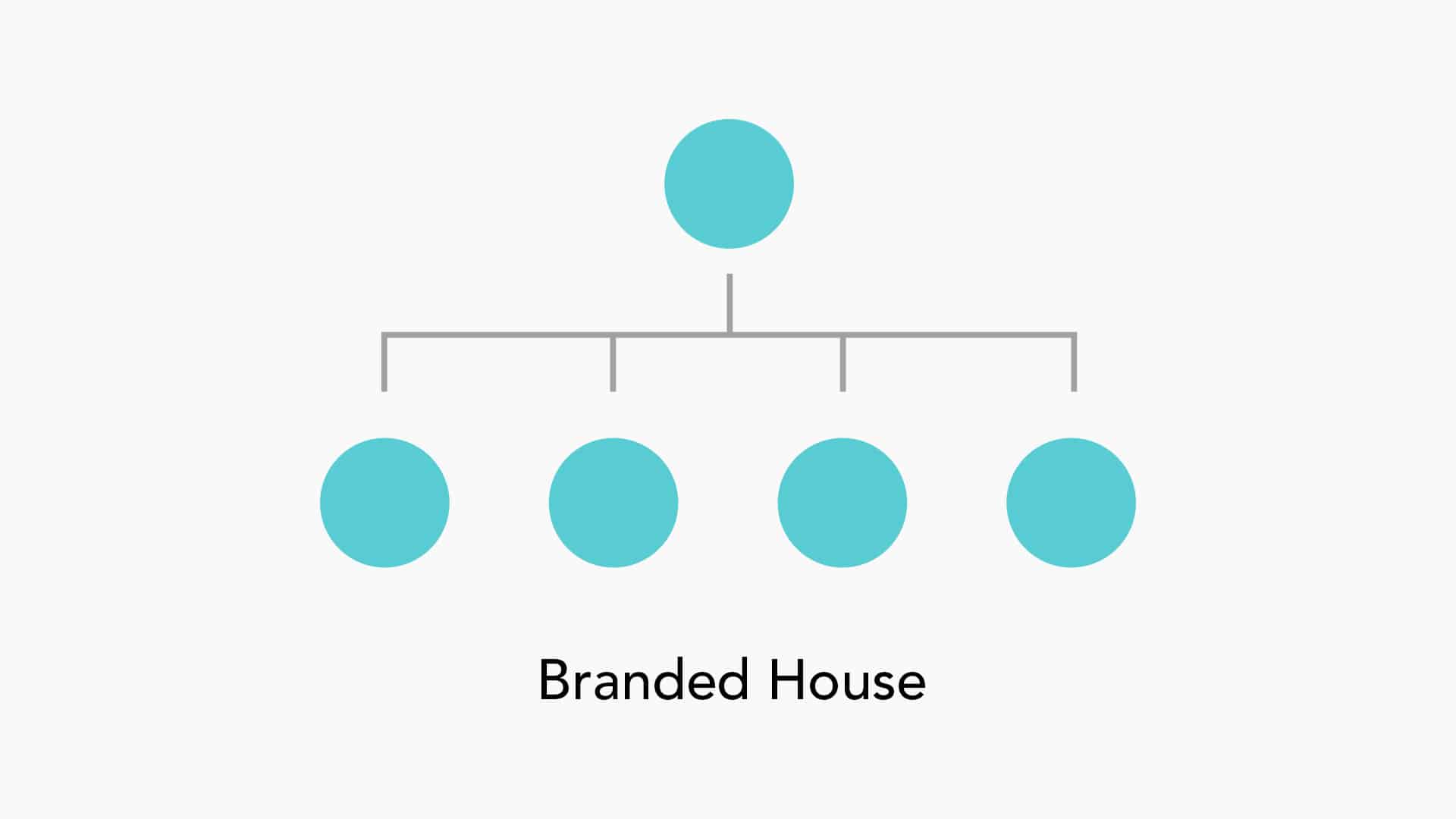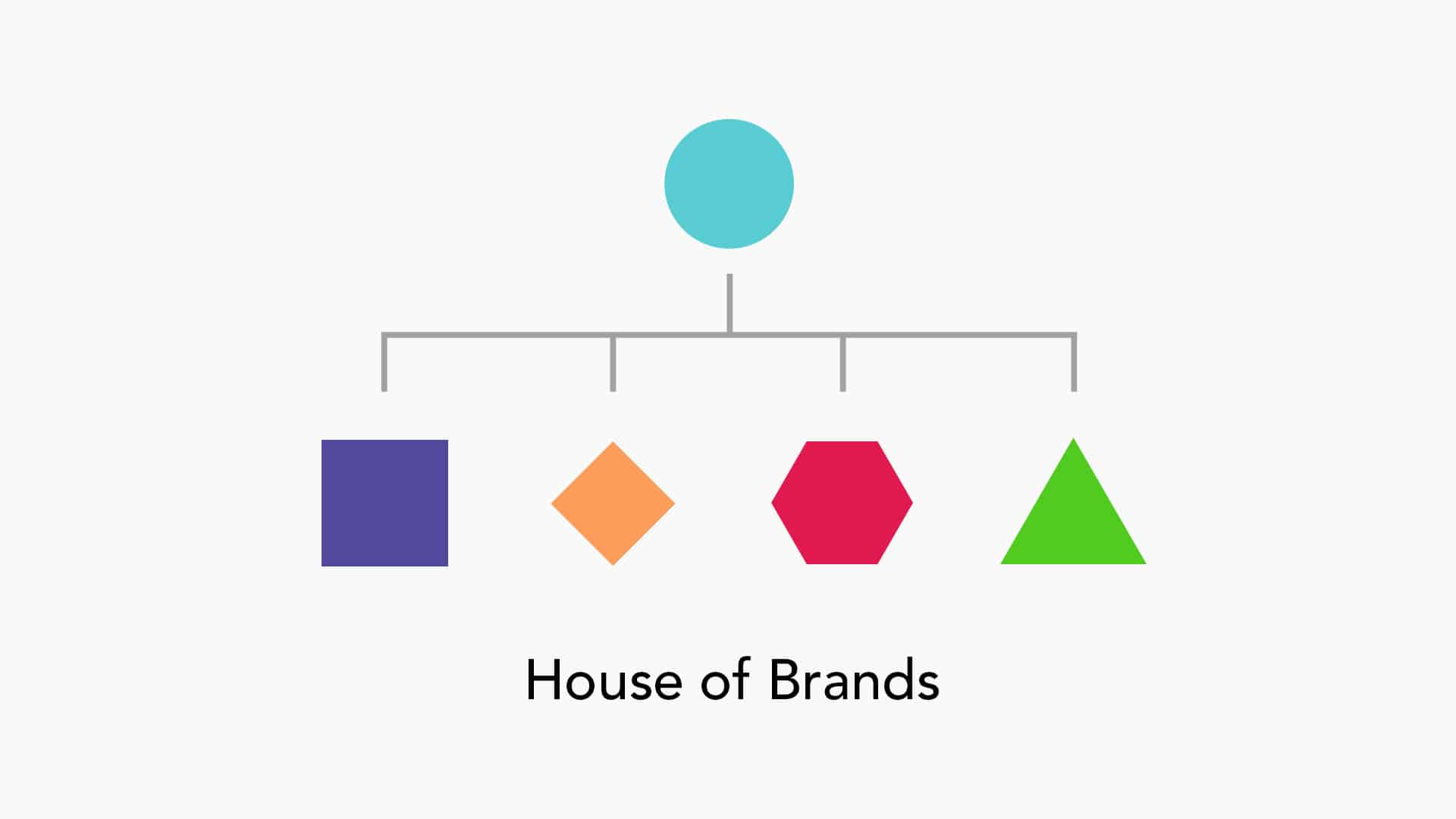Every business owner needs to build a brand. And the clarity of that brand’s message and its position is essential. However, as brands grow inevitably over time, it’s easy to let the clarity slip. And that’s such a shame because structure becomes even more important as your brand grows. But that’s where the importance of brand architecture comes in.
In essence, brand architecture brings order to chaos. It’s what helps brands organize and structure a framework that allows for independent brand equity.
Let’s break down what brand architecture is, and how business owners like you can use to construct multiple brands or maximize structured growth.
What Exactly Is Brand Architecture?
Companies develop a brand architecture to sell different products or offer various services that need to be structured in some ways. At some point, you’ll get to the conclusion that what you’re doing is not just for one company, but that you’re offering different services and products, and they all need special attention.
Brand architecture is the interrelationship of a parent company with its subsidiary companies, services, and products within one organization.
You can think of brand architecture as the chart that structurally positions brands of the organization.
Most businesses present their services, products, and offerings under one entity. This structure is effective, for the most part. However, a growing brand coincides with a developing suite of services, products, and offerings. This broadens the target audience, and in turn, dilutes the message.
As your audience expands, there are more specific segments of the growing audience that emerge. This opens the opportunity for a brand to speak more directly and to each segment too.
But continuing in the existing structure results in overlooked segments, untailored messaging, and unfocused positioning.
Can You Benefit From Brand Architecture?
Brand architecture is a daunting word, and it can feel like the term only exists for titanic brands like Unilever or Apple. But the truth is, lots of small to medium businesses can also receive the benefits of a structural organization, and then it all flows down to performance. Plus, it helps your branding stand out.
So what exactly can having brand architecture offer your business?
- Protecting brand equity: Brand equity is the value of a brand taken from consumer perception. Each sub-division boasts its brand and has the opportunity to shape their target customers’ perceptions, and ultimately, even grow their own brand equity.
- Targeting the needs of customers: Segmenting a broad audience down to smaller segments opens doors of hyper-targeting communication. A brand can earn trust and affection from its followers if they’re capable of speaking directly to their audience in ways that make them feel understood.
- Ensures clarity and synergy: Brands with multiple services, divisions, and products that don’t use brand architecture will find it difficult to occupy a distinct place in the minds of their audiences. The broader a brand’s offering and audience, the less defined its position. In the end, the more likely they are to fade into insignificance.
- Better brand awareness: Divisions, services, products, and companies that remain under one entity would be entirely reliant on that entity for cultivating brand awareness. With brand architecture, each sub-division has the chance to stake claims for its own brand awareness, with specific messaging communicating to particular strengths, benefits, and outcomes.
There are different ways to architect a brand, and most enterprise-level companies that sell multiple products and services use various strategies. Failing to leverage brand architecture is a mistake you don’t want to make.
Brand Architecture Models & Frameworks
We can distinguish 4 ways to organize brands within a company. These are the four basic structures, and all of them have different strengths and weaknesses.
#1 Branded House

Branded house structures are common when a master brand already has a well-defined product or service offerings. They’re tightly related to how audiences consume a brand’s offerings. Brand name structures and identity design of the sub-brands are derived from the master brand; meaning, the message and appearance feel and sound very familiar.
This structure uses well-established brand equity, awareness, association, and customer loyalty. For this, the consumer adopts a sub-brand without asking questions, because of the relationship and trust already built by the master brand.
Good examples of this structure include: Apple, FedEx, Google, and Coca-Cola.
#2 House of Brands

Branded house structure has a collection of sub-brands, derived from a master brand in terms of identity, messaging, and position. But a house of brands structure is a bit more different. In this architectural structure, master brands operate primarily from an organization and investment point of view. It houses distinctly different brands that operate independently of one another.
A business operating under such a structure as a diverse target audience that spans multiple industries. The consumers are mostly unaware of the relationships that the brands underneath the umbrella share with each other.
The main benefit is the flexibility and the independence that sub-brands enjoy. They aren’t tied to the position, messaging, or appearance of the master brand. Therefore, they can address their respective audiences with tailored communication.
Familiar examples of house of brands include P&G, Unilever, and Newell.
#3 Hybrid Brands
This brand architectural structure is an emerging trend put forward by modern brands. And it’s all about subtlety. Sub-brands reference the master brand without overtly referring to its appearance or name.
In essence, the sub-brands follow the same “style” of the parent brand in rather obvious ways. It technically displays a distinct resemblance to the point where consumers will “feel like” it’s the parent brand.
An excellent example of a hybrid brand is Google, which is owned by Alphabet. Underneath the Google brand, you’ve got Analytics, Console, Chrome, Ads, Maps, Hangouts, etc. Sub-brands mentioned use Google’s signature color palette, and exhibit the clean graphic style. All of them “feel like” Google brands.
#4 Endorsed Brands

Endorsed brand architecture is the halfway point between the house of brand and branded house structures.
“In this setup, you have a sub-brand is endorsed by the master brand with a reference to that brand throughout their communication. Essentially, the sub-brand establishes itself in its own world while consistently and publicly holding the hand of its master brand.”
~ Stephen Houraghan, brand strategist at Brand Master Academy
The structure provides sub-brands with plenty of flexibility compared to the branded house structure when it comes to appearance, positioning, and messaging. At the same time, it still leverages the pros of the master brand’s equity throughout the endorsement.
Great examples of endorsed brand architectures include Marriott Hotels, Nestle’s KitKat, the Sony Playstation, etc.
The Takeaway
Business acquisitions, expansions, and mergers are suitable for a company in the long run, except they create a lot of confusion and clutter. But no problem is without a solution. And the best way to resolve that confusion is through a clear brand architecture.
Keep in mind that it’s more than just coming up with clever brand names, or using colors to determine brand identity and brand personality.
- Decide how closely you’d like to be associated with a parent brand.
- Ensure every product or service that needs a brand would get a brand.
- Make clarity in the connections across brands a priority.
- Pay attention to the tiniest details of your brand identity system.
DepositPhotos – branding


